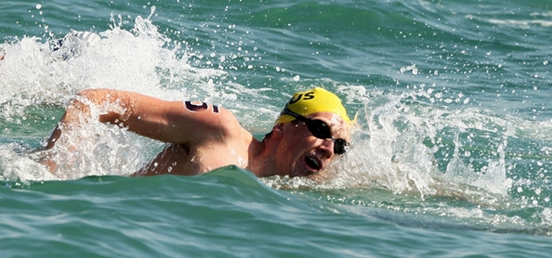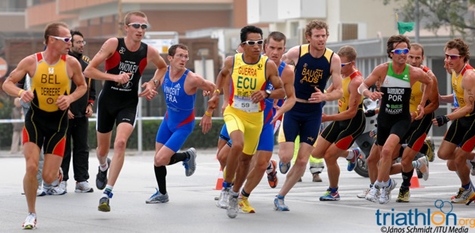Shin Splints Physiology and Symptoms
Shin splints, also called Medial Tibial Stress Syndrome, is one of the most painful and debilitating injuries runners can experience. Endurance runners can be particularly prone to this injury. Untreated or severe shin splints can cause a tibial stress fracture.
This article is intended to provide you with (i) an understanding of shin splint physiology and symptoms, (ii) ways to prevent shin splints and (iii) recommended treatment for shin splints.
What are shin splints? Shin splints occur when the tissue that connects muscles (posterior peroneal tendon) to the lining of the tibia becomes irritated and inflamed.
Shin Splints Symptoms. Shin splint discomfort is often described as dull at first. However, with continuing trauma, the pain can become so extreme as to cause the athlete to stop workouts altogether. Shin splints are easy to identify as the symptoms primary are pain on the inner side of the shin, described as aching or throbbing with local tenderness. Note that if severe pain persists for two weeks, it is wise to see a doctor who may suggest an x-ray to check for a possible stress fracture of the tibia.
Shin Splints Prevention
As, in some instances, shin splints may take weeks or months of healing depending on the case of shin splints, shin splint prevention is essential to endurance runners and triathletes. There are several things runners can do to significantly lower the risk of developing shin splints:
1. Maintain Good Hydration and Electrolyte Balance. Always maintaining good hydration and good electrolyte balance is important to prevent many running injuries, including shin splints. The best hydration strategy to start a run fully hydrated. For distance runs and endurance races good hydration strategy begins by focusing on full hydration one week before race day.
See Hydration for Endurance Athletes for recommended fluid intake quantity and information on electrolyte balance.
Many endurance athletes like Marathon, Ultra runners and Ironman triathletes are more often than not in a state of dehydration and electrolyte imbalance.
2. Choosing the Right Shoe. Carefully select footwear that fits your running style and physique. Different shoes have different degrees of support and motion control. See Choosing Your Next Running Shoe.
3. Shoe Replacement. Replace your shoes about every 350 to 500 miles.
4. Consider Arch Support. Arch supports can help prevent the pain of shin splints, especially if you have flat arches. If over-pronation is causing your shin splints, you can get custom-made arch supports, called orthotics, which help correct the over-pronation.
5. Warm Up Gradually. Warm up gradually first and then do light progressive stretching.
6. Gradually Increase Volume. It is very important not to Increase intensity of exercise or mileage of running without proper preparation and conditioning. The general rule of thumb for those runners and triathletes that have distance ambitions beyond their current conditioning level, is to not increase either the distance or intensity (combined referred to as volume) by more than 10% per week!
7. Avoid Over-Striding. Avoid over-striding, which can place additional stress on your shin. some runners overstride, and land heavily on the heel with each footstrike (thus, shin splints are a common ailment in military boot camps, where recruits march extensively by extending the leg forward and forcefully striking the boot heel on the ground).
8. Good Running Technique.Take inventory of your running technique and seek ways to improve it! See Tips on Ideal Running Technique.
9. Softer Surface Running. Run on a softer surface, such as grass, dirt, or certain outdoor tracks. Gradually change from a softer running surface to a hard one.
10. Cross Train. Swimming and Cycling are excellent aerobic sports that help improve running performance. Swimming is a great activity to help speed up running recovery, as swimming helps increase blood flow thoughout the body and builds lung capacity. Cycling builds leg muscles, including the muscles supporting the knees which help improve running conditioning and performance.
11. Strength Train. To strengthen your shins, try toe raises. Stand up. Slowly rise up on your toes, then slowly lower your heels to the floor. Repeat 10 times. When this becomes easy, do the exercise holding progressively heavier weights. Leg presses and other exercises for your lower legs can be helpful, too.
12. Maintain Proper Rest and Recovery. Regular good sleep and adequate recovery after long workouts are essential to repair and rejuvenate our bodies at the cellular and organ level. Muscles need time to rebuild before the next workout to lessen the chance for injury. See Sleep, Rest and Recovery for tips on how to get good sleep and rest naturally.
13. Muscle Imbalance. A strength imbalance between two opposing muscle groups in the leg can cause shin splints. It is believed by NATA athletic trainers that a contributing cause of shin muscle pain in some cases is the relative weakness of the muscles on the anterior of the lower leg compared to those in the calf. Exercises designed to strengthen the muscles of the shin are prescribed to even out the muscle imbalance.
14. Running on a Slope?. Running on a slope can cause an imbalance in among your leg muscle groups placing stress on the tibial connective tissue.
15. Diet. Having a healthy diet is more than a cliche. A good diet helps recovery. Regarding shin splints specifically, calcium is important to build strong bones and rebuild muscle. A diet rich in calcium will lower the risks of weakening the tibial connective tissues. A rich intake of calcium from natural sources, like Dairy Products, will help meet the body's significant task of rebuilding the muscle and strengthen the bones of endurance athletes. Iron play a key role in building connective tissue. Could iron deficiency be a contributing factor to shin splints? See Iron, Health and Peak Athletic Performance.
Shin Splints Treatment
Untreated shin splints can lead to a stress reaction mid-shaft in the tibia, which can eventually lead to a stress fracture.
Here is recommended treatment for shin splints:
Rest. Take a break from running. This is often enough to clear up the shin splint within a 10-day period.
Ice. Apply ice in 15-minute periods during the first 24 hours after the injury and for several days after as needed. Icing helps reduce swelling, inflammation, and pain. See How to Treat Running Injuries with Ice
Compression. Wrap the shin in an elastic bandage. This will help stop swelling and provide support for the shin and nearby soft tissues.
Elevation. Keep the injured leg raised for the first 24 hours, including during sleep.
Hydration. Good hydration aids in the healing process. Whole, low or nonfat milk is a good source of hydration for soft tissue healing and recovery as it contains calcium needed to rebuild muscle.
More about Ralph Teller. See Ralph's 1Vigor Log Calendar.






